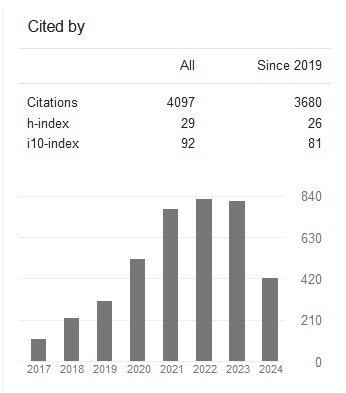Synthesis, structural characterization and biological activity of Cu(II), Co(II) and Ni(II) complexes derived from 2-(thiazol-2-ylimino)thiazolidin-4-one ligand( Vol-4,Issue-9,September - September 2018 ) |
|
Author(s): Ramona Khadivi, Hoda Pasdar, Naser Foroughifar, Mehran Davallo |
|
Keywords: |
|
|
thiazol, thiazolidine, sulphur atom, square planar, octahedral, antibacterial activity. |
|
Abstract: |
|
|
A novel series of metal complexes of 2-(thiazol-2-ylimino) thiazolidin-4-one ligand were prepared; the corresponding ligand was synthesized from reaction 2-Chloro-N-(thiazol-2-yl) acetamide with ammonium thiocyanate. The complexes are characterized by FTIR, UV-Vis, molar conductance and mass spectroscopy. The low molar conductance values indicate that the complexes are non-electrolytes.Spectroscopic studies confirmed that the ligand bonded to the metals through the sulphur atoms. Coordination number of copper and nickel complexes is four with square planar geometry, while the cobalt complex has octahedral geometry.In vitro antibacterial activity of ligand and its metal complexes was evaluated using well diffusion method and compared to the standard drug (tetracycline). The antibacterial activitywas examined against Escherichia coli, and pseudomonas aeruginosa, as gram negative bacteria and Staphylococcus aureus as gram positive bacteria. It was found that Nickel complex has the highest antibacterial activity among the synthesized compounds with Zone inhibition diameter in the range 25-29 mm. |
|
Cite This Article: |
|
| Show All (MLA | APA | Chicago | Harvard | IEEE | Bibtex) | |
Share: |
|

 DOI:
DOI: 



























